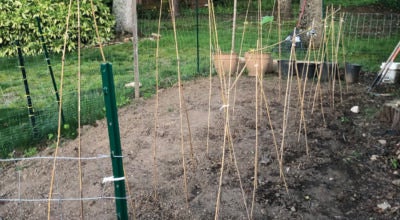The Extension Corner: Proper storage is crucial to hay quality
Published 11:20 am Thursday, July 19, 2018
By Samantha Foster, for the SNAP
 Summertime is prime time for hay making, but what about storing the product of your hard work?
Summertime is prime time for hay making, but what about storing the product of your hard work?
Adequate hay storage will help ensure that your harvest retains quality and will decrease losses as well. These losses can be due to weathering and deterioration and less visible losses come in the form of decreased nutritional value.
After six months of sitting on bare ground with no cover from the elements, a loss of around 27 percent can be expected … that’s over a quarter of each bale. Here are some tips for keeping your hay as fresh as possible:
• Evaluate what your bales are sitting on. If they will be on bare ground, a well-drained slope is more ideal.
Spreading crushed rock or gravel on the ground is an economic option for keeping moisture away, and an even better option is sitting them on wooden pallets.
This not only creates a barrier between the bale and the ground, but allows for air to circulate under bales. Having some sort of groundcover can cut losses from between around 5-15 percent, depending on the situation.
• Covering hay to shield it from weather yields even higher results in preventing losses.
Wrapped hay is generally more protected than hay that is under a tarp, but even a simple tarp used correctly can help save hay. Wraps and sleeves may help prevent losses, but they are also not reusable and require special equipment, so costs should be carefully considered if considering this route.
For someone with a large herd utilizing a fair amount of hay it could be a good fit, but for someone with a smaller operation it may not be feasible, even after considering the value of hay saved.
• Stacking hay can be a space-saver, but should only be done if the hay is covered.
When hay is stacked outdoors without a cover overhead rain leaches down through the stack and has difficulty evaporating. This means that hay on the bottom may become moisture damaged. If putting hay in rows outdoors it is suggested to space rows at least three feet apart for good air circulation.
• For losses that can be expected to be under 10 percent, a dedicated storage building is the prime option. Storage facilities can range from an open- air pole barn to a fully enclosed building or even a repurposed existing barn.
Although this is the best route for many as far as the situation where they will have the lowest losses, it’s important to also consider the cost of the structure as well as the labor and equipment costs involved in stacking and retrieving hay this way.
While hay should be baled at the proper moisture all of the time, this is especially important for hay stored in a structure, as high- moisture hay is a fire hazard.
• Proper storage is a key in retaining quality, but depending on the resources that you have available, you may also consider prioritizing how different types of hay that you have are stored.
If you only have so much space under a shelter you may choose to store a hay that is higher in nutritional value there while leaving hay that is lower- quality outdoors under a tarp.
For help in making storage decisions or evaluating hay quality call Samantha Foster at 704-983-3987.
Samantha Foster is an extension agent with the Stanly County office of N.C. Cooperative Extension.



